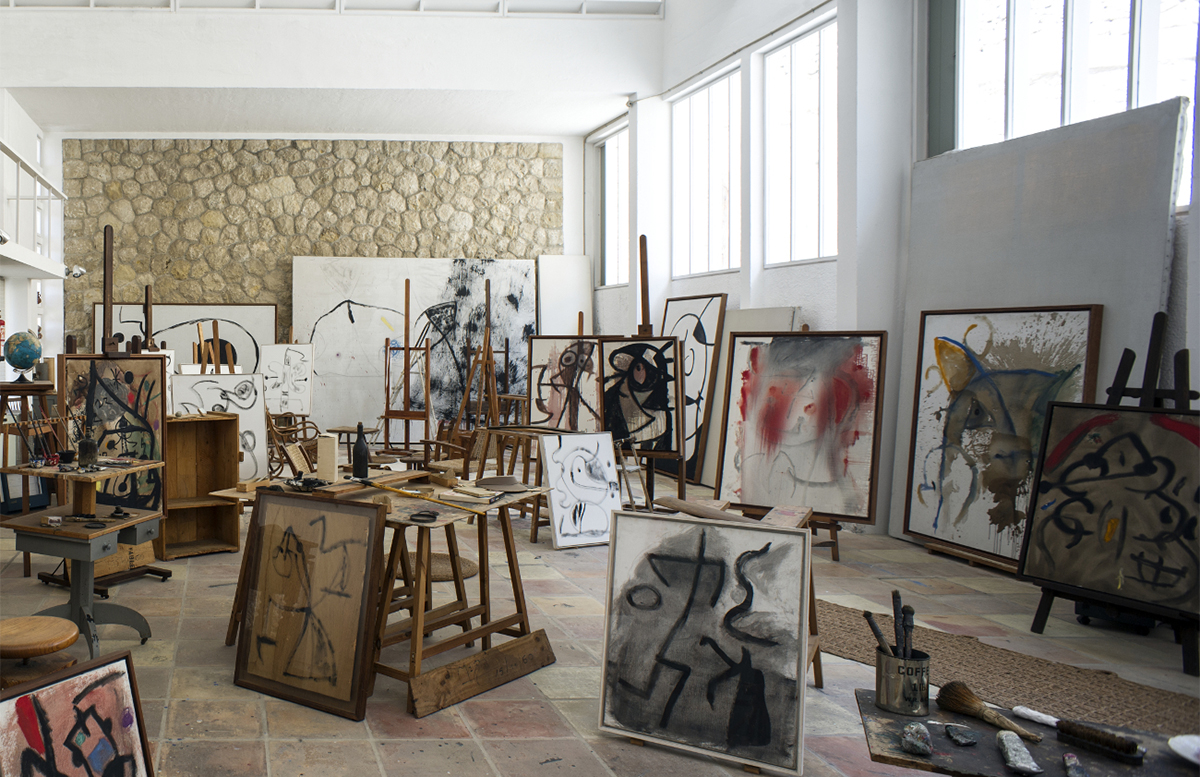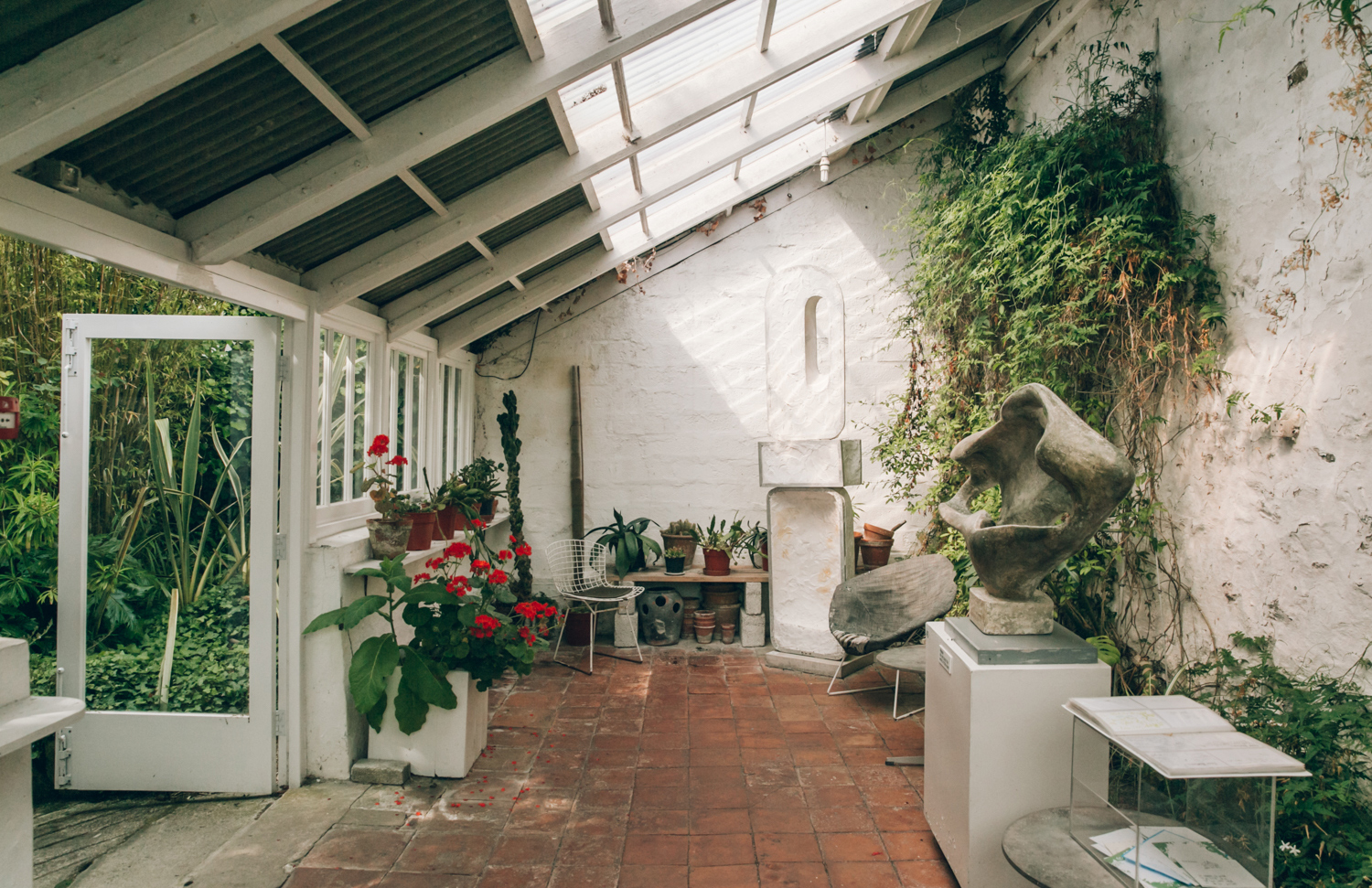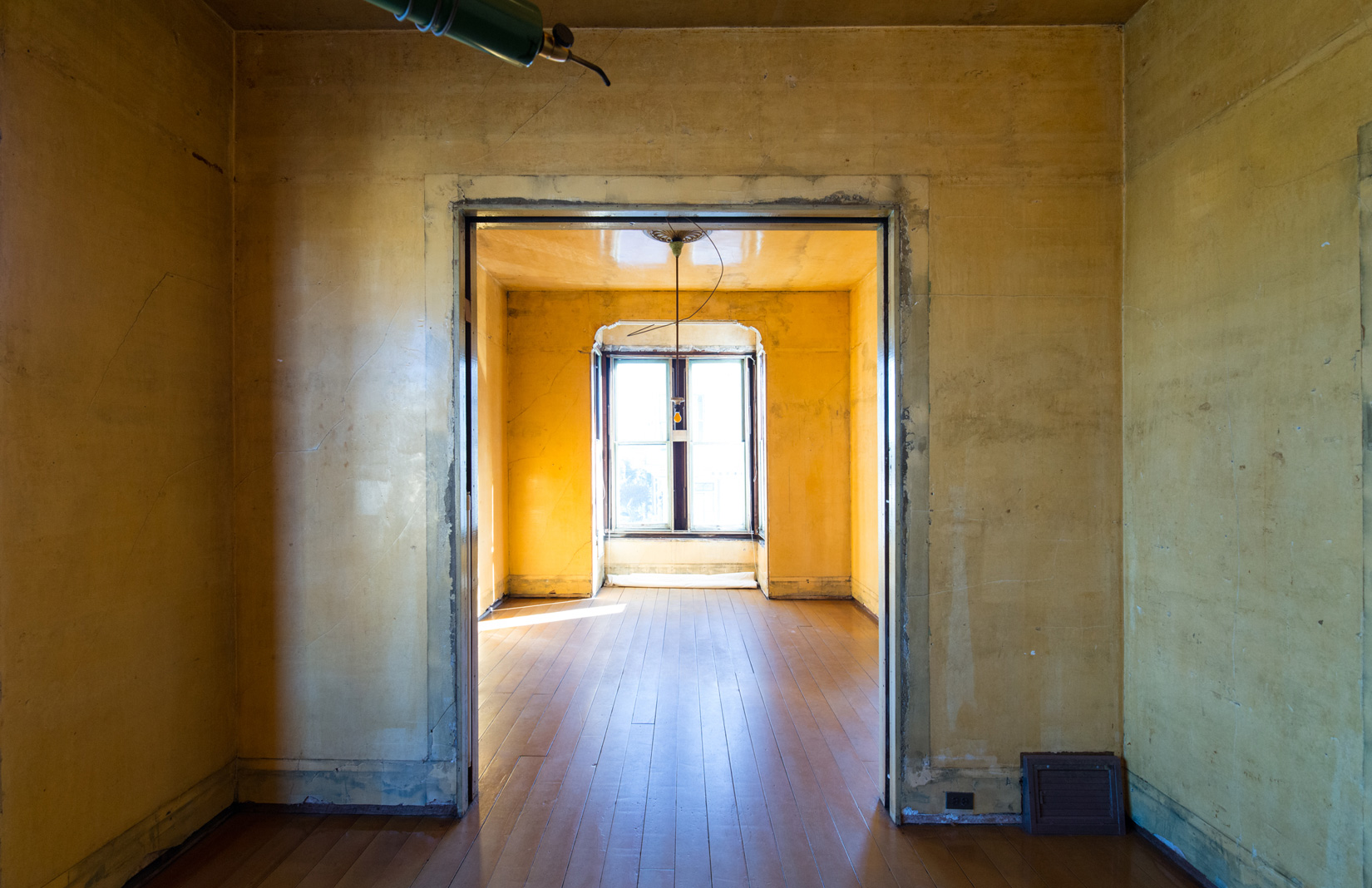Artists’ studios are unfailingly fascinating, never more so than when left untouched after their passing. While some studios have the good fortune of being lovingly recreated – Brancusi’s Paris atelier was transported from the nondescript Impasse Ronsin to the Centre Pompidou by Renzo Piano in 1997 – it’s the ones that remain in their original spots that exert the strongest pull.
Following our round up of extraordinary artists’ homes, we now turn our gaze on studios that have withstood the march of modernisation and would still be recognisable to their owners today, should they be somehow resurrected. From Jean Miró’s modernist masterpiece designed by Josep Lluís Sert to the humble hilltop atelier in Aix that framed so many of Cézanne’s masterpieces, here are our nine favourite artists’ studios you can visit.
Joan Miró’s Sert studio in Mallorca, Spain

In 1956, having settled in Mallorca, the Barcelona-born artist Joan Miró commissioned his old friend Josep Lluís Sert to create his dream studio. The result is a classic work of modernism, and an adherent to Sert’s notion that ‘architecture itself can become sculpture’. Big enough to house larger commissions, with the sections for work and storage clearly defined and separated, the artist’s studio met his demands while offering something sinuous, new and in keeping with local traditions. After Miró’s death it was declared an Item of Local Heritage, and maintained as the artist left it for the public to visit. This includes the varied assortment of odds and ends – paintbrushes, crayons, postcards, shells, butterflies, palm leaves and Hopi Indian dolls – with which he filled his space in order to inspire creativity.
Henry Moore’s Perry Green studio, Hertfordshire, UK

The Blitz chased Henry Moore and his wife Irina out of their Hampstead home in the 1940s, into rural Hertfordshire where they found a farmhouse called Hoglands. While first they shared it with another family, the sale of a sculpture to Gordon Onslow Ford allowed them to buy the place outright and it became the artist’s home and studio for the rest of his life. As the years passed and wealth was amassed, Moore built studios and outbuildings in the surrounding grounds, and today the site combines the scale of a sculpture garden and the intimacy of his studios, which have been faithfully recreated.
Gari Melchers’ Belmont studio, Virginia, USA

While less well-known today, Gari Melchers was a much-admired artist in the 19th and early 20th centuries. His work was accepted by the Salon of Paris, and he is often credited with cultivating interest in the fine arts in his native United States. In 1916, he moved with his wife to an 18th-century house in Falmouth, Virginia, and installed a stone studio in the grounds where he worked until his death in 1932. Today it is possible to see both house and studio much as the Melchers would have known them, with most of the furnishings and art materials remaining intact.
Barbara Hepworth’s St Ives studio, Cornwall, UK

‘Finding Trewyn Studio was a sort of magic’, wrote Barbara Hepworth. ‘Here was a studio, a yard and garden where I could work in open air and space.’ And so she did, from her discovery of the spot in 1949 until her death in 1975. With most of her bronzes left as she laid them, and the garden – a collaboration between Hepworth and the composer Priaulx Rainier – untouched, the artist’s studio provides a unique insight into the life and practice of one of Britain’s most innovative sculptors. Currently undergoing renovation works, the studio reopens on 26 March 2018.
Edvard Munch’s studio, Ekely, Norway

Is it significant that it was during Munch’s time at Ekely that he painted many of his most vibrant and colourful works? Not necessarily of course, but a form of contentment could be construed in the bright hues of pieces such as Starry Night and Self-portrait: Between the Clock and the Bed. The artist bought the estate – a former plant nursery on the outskirts of Oslo – in 1916 and lived and painted there until his death in 1944. He had both summer and winter art studios, but today only the winter one remains. Open to visitors at the weekend, it is still used by artists inspired by Munch, some of which have been riled by Bjarne Melgaard’s plans for a UFO-shaped home in the area.
Pollock-Krasner House, East Hampton, USA

In 1945, just after they were married, Jackson Pollock and Lee Krasner used a loan from Peggy Guggenheim to buy a modest wooden house in Springs, East Hampton. A small storage barn blocked the house’s view of Accabonac Creek, so Pollock had it moved to one side before converting it into his studio. Using the unconventional method of laying his canvases on the floor and applying paint from on high, he both created some of the greatest works of Abstract Expressionism and left myriad drips on the floor. After his death from drunk driving in 1956, Krasner moved into the studio, tacking her works to the walls and leaving her own vivid paint marks in squares around the paper. The space has been preserved as the Pollock-Krasner House and Studio, and its marks remain, having made the shift from mistakes to art in themselves.
David Ireland’s 500 Capp St. San Francisco, USA

Unlike most of the studios on this list, David Ireland’s San Francisco abode had already established an identity as a public space some years before the artist died. Conceived as an evolving experiment in environmental art, the house is filled with installations made by Ireland between 1975 to 2008 and came to function as a self-portrait of sorts. Working with the creaking bones of the Victorian building, Ireland fashioned something that is at once an artist’s portfolio, a time capsule and a glimpse into the future. It has been preserved thanks to the intervention of a philanthropist who saved the house from developers in 2008, and reopened it to the public in 2016.
Irma Stern’s studio, Cape Town, South Africa
The Firs in Rondenbosch was home and studio to Irma Stern for more than four decades. She moved into the house in 1927, and never left, creating her vividly coloured paintings, ceramics and sculptures here until to her death in 1966. Initially rejected by critics in her homeland, Stern had managed to change their minds by the 1940s, becoming one of South Africa’s most beloved artists. She was obsessive, often framing her own works, packing up and hanging exhibitions and arranging sales herself, all from the innocuous surroundings of her home studio. Opened to the public in 1971, The Firs has been kept largely as Stern left it, with the addition of a commercial gallery upstairs, dedicated to the work of contemporary African artists.
Cezanne’s atelier, Aix en Provence, France

In 1901 the 61-year-old artist Paul Cézanne bought a plot of land on a hill north of Aix. There he built the modest house that became his art studio – lit through a vast north facing window. At 5:30 am every morning, Cézanne would embark on the 1.2km trek from his apartment in Aix and spend the day painting, either in the studio or on the Lauves’ hillside overlooking Monte Sainte Victoire – the mountain featured in 44 of his oils and 43 of his watercolours. This was also the hill where, in October 1906, Cézanne was found unconscious after a freak rainstorm. Despite being wheeled back to the house in a laundry cart and seeming to rally, the painter died of pleurisy six days later. After a few decades in private hands, Cézanne’s atelier is now in the hands of the city of Aix, who have preserved the artist’s studio space as he might have left it – filled with furniture, work materials and models of his famous still lives.
Read next: 10 museums opening in 2018























